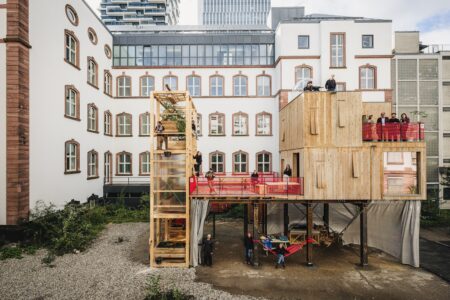
Todd Bracher: Das Haus
Spanning the Atlantic Ocean is nothing new for renowned Brooklyn-based talent Todd Bracher. In his work, the product designer draws on his Old World, craft-based education in the United States and Denmark, his training with Tom Dixon in London and his professorship at ESAD Reims. In fact, he has always bridged American and European references. It’s no wonder that Bracher would apply this eclectic approach to his design of the Das Haus installation, scheduled for 16 to 22 January 2017 at imm Cologne.
Now in its sixth edition, the program tasks a rising or established guest of honour with the job of speculating on the future of interiors. Issues of architecture, furniture, amenities, finishes and colours will be addressed within the framework of comfort, emotional responses, functionality and sustainability. At a major trade fair like imm Cologne, this kind of installation allows celebrated practitioners to challenge the boundaries between conceptual theory and market realities.
An analytical minimalist, the American-born Bracher has collaborated with major brands such as Georg Jensen, Cappellini, Fritz Hansen, Herman Miller, Humanscale, Issey Miyake, Swarovski, Zanotta and 3M. The product designer employs a clear vocabulary that places him in the classic lineage of the design tradition. However, Bracher also sometimes explores contentious issues like the blending of work and life in today’s society.
For Das Haus, Bracher decided to work within specific commercial constraints. Physically, the structure will head in a new direction by emphasising the architectonic qualities of three deconstructed elements. A floating, slightly concave, gabled roof will connect two diametric, framed constructions below. The reduced yet varied installation is designed to essentialise the contemporary functions of eating, sleeping and bathing. One space leverages the structural potential of a semi-translucent bookshelf as a side wall.Burgundy Sinfonia and Eluis plaid textiles by Création Baumann add a level of warmth to the installation. Bracher clarifies present-day complexities by putting the traditional role of the home up against contemporary conditions, asking us to reconsider the fundamentals of our lifestyle.










